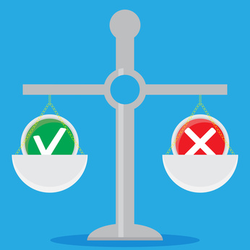Check and balance
ComplianceTech®

The expression is always left in the English language even when it is used in other languages because it is not translatable. It refers to the basic institutional and political mechanism of the American system. Regulatory theorists and practitioners often refer to it as the right political and institutional framework on which to base an economic organization of Regulation. This would mean a need to reform the political systems built on another mode of separation of powers.
This strong basis conforts the fact that the system of Regulation is not neutral, it is the reflection of a political organization.
The shock between these different philosophical and political conceptions explains why economic regulation has been difficult to accept in Europe, and especially in France for a long time. Indeed, according to the French political scheme resulting from the Revolution, there are two powers: the executive and the legislative, the judiciary being only an authority. The executive is built on the hierarchical principle of which the head is constituted by the government, any administration ultimately coming from a minister. It is therefore a vertical system, which has the merit of simplicity. Regulatory authorities have been imposed by European directives since the 1990s, in the form of bodies which may be administrative and Under this title of the State but must be necessarily independent of the government from the moment that operated on the market of the public enterprises which also obeyed the government through the theory of the state shareholder.
Le choc entre les deux conceptions philosophiques et politiques explique que la régulation économique ait eu du mal à être acceptée en France pendant une longue période. En effet, selon le schéma politique français issu de la Révolution, il existe deux pouvoirs : l’exécutif et le législatif, le judiciaire n’étant qu’une autorité. L’exécutif est construit sur le principe hiérarchique dont la tête est constituée par le gouvernement, toute administration relevant finalement d’un ministre. Il s’agit donc d’un système vertical, qui a pour lui le mérite de la simplicité.Les autorités de régulation ont été imposées par des directives européennes à partir des années 90, sous la forme d’organes pouvant être de nature administrative et relevant à ce titre de l’État mais devant être nécessairement indépendants du gouvernement dès l’instant qu’opéraient sur le marché des entreprises publiques qui elles aussi obéissaient au gouvernement à travers la théorie de l’État-actionnaire.
This is the fundamental European rule of the impossibility of cumulation of the regulatory / operator state, a situation constituting a conflict of interests. The French State, which intends to remain owner of public operators, in particular EDF, has preferred to relax control of regulation by creating independent administrative authorities (AAI).
Consequently, the vertical model of the hierarchy of the executive has been disrupted since these authorities no longer report (as free electrons) of it. For them to be held accountable, judicial review of the authorities through appeals has been increased. In the same way, through public reports to Parliament, the IAAs began reporting directly to the IAA. The political model becomes horizontal.
This then refers to a completely different tradition: that of the United States. Indeed, in the United States, the executive (the White House) has both the Parliament (the Congress) and a very powerful judiciary (the Supreme Court); No one has taken over the others, each however being able to hold the others accountable. This is called Check and Balance. Not least because the Regulation has been institutionalized by economists who, through the current Law and Economics, have perceived what they consider to be the most appropriate right as American law, which must impose itself almost "by nature".
Thus, through this small corner in the door that is the institutional reform introduced by regulation, the French political system evolves towards this American system of check and balance, being observed that the United States were the first historically to put in Regulators. This rapprochement of the systems can be carried out all the more so as in Europe the organs in charge of the control of the constitutionality control do not stop increasing in power. Thus, in France, since the constitutional reform of 23 July 2008, the Constitutional Council can assess the constitutionality of laws not only before their promulgation but even when they have entered the legal order, It is becoming a "Supreme Court" on the American model.
The political models remain very different, in particular because the French Parliament does not have the same blocking power as the US Congress, and the Constitutional Council does not have the same doctrinal power as the US Supreme Court. Leaves France in the place of a presidential system virtually without balance, face to face Regulators and the system of the European Union, Europe more and more a Europe of Regulation.
comments are disabled for this article